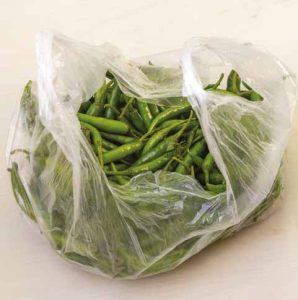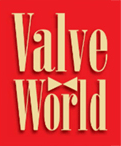Image credit: BASF SE.
Steam crackers form an essential part of our industrial landscape. For decades, they have been used to convert larger or saturated hydrocarbons into versatile basic materials such as ethene, which in turn is the basis for omnipresent plastics like polythene. Desk research indicates the key role that valves fill in a surprising number and variety of applications.
By KCI Editorial
Basic principles
The basic principles behind a steam cracker are readily explained. The feedstock, such as ethane, naphtha, etc is mixed with high temperature steam and heated in a furnace. Under these conditions a chemical reaction takes place whereby the feedstock molecules are ‘cracked’ to form smaller molecules and/or unsaturated molecules. The chemicals thus produced, such as ethene, form the starting point for highly useful products like polythene.
The devil, of course, is in the detail. To start with, the reaction requires temperatures typically between 800 °C to 1100 °C. Moreover, the so-called residence time in the furnace is just a few milliseconds. The cracked gas then requires quenching to stop the cracking process. Without quenching, the cracking process could continue, ultimately breaking all the hydrocarbons down completely to their basic elements – carbon and hydrogen. The gas next has to be compressed before being passed through an acid gas absorber, a wash tower, dryer beds and various separation stages to isolate all the cracked products.
In addition, the cracking processes typically causes a slow build-up of a hard layer of coke (a form of carbon) on surfaces inside the reactor.
This impairs reactor efficiency. Furnaces are therefore typically de-coked every few months, by flushing them with steam. This converts the coke to carbon monoxide and carbon dioxide gases.
In short, steam cracking facilities are therefore complex systems, in which various types of high-performance valves are required.
Valve overview

The following is based on the website pages and/or brochures of various OEMs. It has been compiled to give a snapshot of key valve applications that are typically associated with various stages of the steam cracking process; it does not pretend to be an exhaustive account.
Feedstock: Control valves are used to regulate the flow of feedstock into the furnace. A typical plant requires multiple control valves arranged in parallel. The feedstock control valve has to function reliably across a wide range of flow rates, given the need to accommodate start-up, commissioning, normal operation and shut-down of furnaces for maintenance. Accuracy and stability during normal operation are key factors, as excessive fluctuations in the feedstock flow can impact downstream processes. Fire-safe designs may be requested given the volatility of the feedstock.
Dilution steam: Before entering the furnace, the feedstock is mixed with steam. A control valve is used to regulate the steam flow. Again, accuracy and stability are the name of the game, in order for the plant to achieve optimum cracking rates.
Burner fuel: A control valve is used to regulate fuel to the furnace. Normally a second, redundant line is present to ensure operation can continue in the event of an incident. These valves need to provide accurate control of both large and small flows, e.g. during decoking. Valves also need to be fast-acting. As a safety precaution, each control valve may be preceded by a double block and bleed arrangement, consisting of two emergency shutdown valves and an emergency vent valve. Additionally, each individual burner will also have its own shut-off valveTransfer line and decoking line: To ensure a safe transition when decoking is required, the transfer line and decoking line are typically fitted with gate valves with a through conduit design. Common features include valve bodies designed to minimise distortion, nozzles for purge steam to prevent coke accumulation (steam can also be used to generate additional sealing load on the discs), double discs, tight shut-off, metal-to-metal seating, minimal corrosion and wear for long and trouble-free operation. For safety reasons, the transfer line valve and the decoking valve are linked (mechanically or electrically). This ensures a positive pressure between the steam cracker and the transfer line at all times. It is important to prevent process gas backflow during the switchover phase. Note that at least one manufacturer has a butterfly valve solution for decoking valve applications.
Other areas: More control and on/off valves will be found in systems such as boiler feedwater, acid gas absorber, dryers, distillation towers, etc. Additional valve types are required throughout such as steam vents and pressure relief valves. Related items also found in steam cracker piping systems include lineblinds and mechanical interlock systems – often specified to ensure safety during, for example, decoking operations. Multiple lineblinds are required per furnace, to ensure positive isolation on all piping such as the fuel gas, feedstock input, dilution steam, quenching oil, decoking line, etc. Given the frequency with which decoking is required, many sources highlight the benefits of lineblinds which incorporate a mechanical system to spread the flanges. Such features can speed up operation, helping to reduce overall downtimes.
Prevent obsolesence
Looking for relevant research work about valves in steam crackers, Valve World discovered a 2022 article in the Journal of Loss Prevention in the Process Industriesi. This provides an extensive account of how pressure relief valve chattering in a propylene column resulted in an explosion and fire in a steam cracker. Highlighting that pressure relief systems must be the autonomous and independent protection of chemical production facilities, the article indicates that, with the passage of time, it is important to revisit the designs of existing pressure relief systems to ensure they have not become obsolete.
Industry news
Late 2024, Velan made an announcement on LinkedIn that their pressure seal valves had been chosen for the prestigious BASF (Guangdong) Integrated CR Cluster project in China. This significant project will utilise over one hundred Velan pressure seal gate, globe and tilted disc check valves for Class 1500 service, with sizes ranging from NPS 3 to 24 (DN 80 to 600). The company wrote:
‘Velan is distinguished as one of only very few manufacturers qualified to meet the stringent specification requirements for the ethylene steam cracker, including the F91 Type 2 material selection and the complex relief valve arrangements mandated by the project’. Earlier in April 2024 BASF, SABIC and Linde inaugurated the world’s first demonstration plant for large-scale, electrically heated steam cracking furnacesii. Their goal is to use renewable energy as a way to reduce carbon dioxide emissions by at least 90% compared to technologies commonly used today. In the eFurnace demonstration plant (see opening photo), two heating concepts are being tested in parallel: direct heating, where the electric current is directly supplied to the process pipes inside the reactor, and indirect heating, using radiant heat from heating elements surrounding the pipes. The prototype is fully integrated into the steam crackers at the Ludwigshafen site and is unique in this scale.
Dive Deeper into Valve World
Enjoyed this featured article from our June 2025 magazine? There’s much more to discover! Subscribe to Valve World Magazine and gain access to:
- Advanced industry insights
- Expert analysis and case studies
- Exclusive interviews with valve innovators
Available in print and digital formats.
Breaking news: Digital subscriptions now FREE!
Join our thriving community of valve professionals. Have a story to share? Your expertise could be featured next – online and in print.
“Every week we share a new Featured Story with our Valve World community. Join us and let’s share your Featured Story on Valve World online and in print.”


